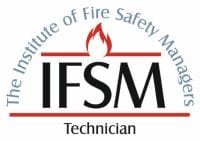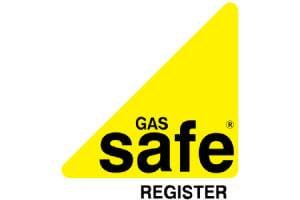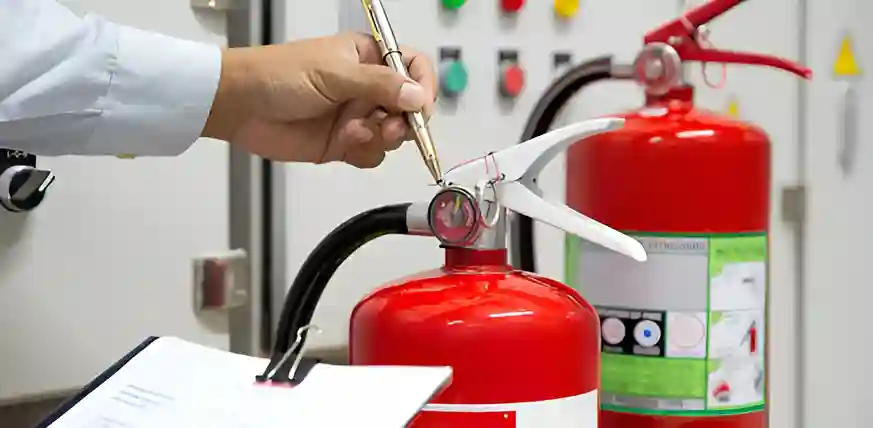
Fire extinguisher testing plays a significant role in maintaining safety and compliance within organisations. It guarantees that fire extinguishers are functioning correctly and meet legal standards. As businesses operate under the requirements set by regulations, the implications of neglecting these tests can be significant. Understanding the testing process and its benefits is fundamental to promoting safety. What are the possible consequences of overlooking this essential practice?
Key Takeaways
- Regularly testing fire extinguishers ensures their reliability, which protects lives and property during emergencies.
- Meeting legal requirements, like the Regulatory Reform (Fire Safety) Order 2005, is integral for businesses.
- Visual inspections and functionality tests determine issues, guaranteeing extinguishers are operational when needed.
- Regular testing encourages safety, enhancing employee confidence and morale in emergency preparedness.
- Investing in fire extinguisher maintenance can reduce liability risks and insurance costs for businesses.
What Is really Fire Extinguisher Testing and Why is it necessary
Although many people may overlook the importance of fire extinguisher testing, it plays an essential role in ensuring safety and compliance. This process typically includes checking pressure levels, inspecting for physical damage, and ensuring that the extinguishing agent is intact.
Regular testing helps discover failures that could compromise fire-fighting efforts during emergencies.
The significance of this testing extends beyond mere compliance with regulations; it is a measure that protects lives and property. Ensuring that extinguishers are functional can make an imperial difference in emergencies, providing individuals with the tools needed to respond effectively to fires.
Fire Extinguisher Testing Requirements in the UK
In the UK, strict legal requirements govern fire extinguisher testing to guarantee public safety and compliance with fire regulations. The Regulatory Reform (Fire Safety) Order 2005 mandates that all commercial premises must have suitable fire extinguishers, which are regularly maintained and inspected.
Businesses need to conduct annual inspections by a qualified professional to verify that extinguishers are functional and compliant with British Standards (BS 5306). Additionally, monthly visual inspections should be performed by the premises’s responsible person to check for any signs of damage or tampering.
Non-compliance can result in legal repercussions, including fines and increased liability in the event of a fire incident. Consequently, adherence to these legal requirements not only promotes safety but also guarantees that businesses are prepared for emergencies, safeguarding lives and property.
The Fire Extinguisher Testing Process Explained
Understanding the testing process is integral to guaranteeing that these critical safety devices function properly during emergencies. The testing process involves key steps to ensure reliability and safety compliance. Technicians typically inspect, maintain, and test each unit systematically.
- Visual inspection for physical damage or corrosion
- Checking pressure gauges to ensure they’re working correctly
- Testing of discharge mechanisms to validate effective operation
These steps not only help identify potential issues but also guarantee that extinguishers are readily accessible and operational when needed.
Regular testing is essential for maintaining readiness and enhancing overall safety in any environment. By adhering to these processes, organisations can better protect lives and property from fire risks.
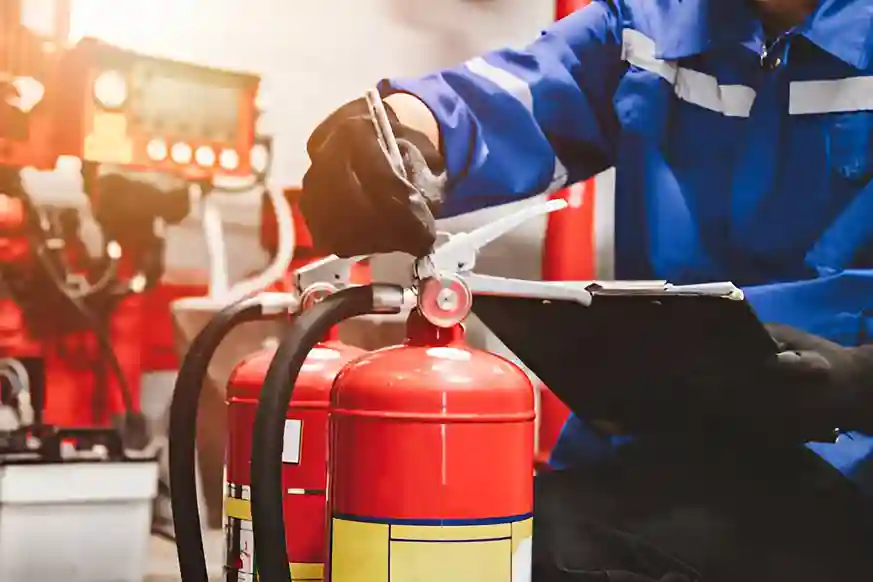
Benefits of Regular Fire Extinguisher Testing for Businesses
Regular testing offers numerous advantages for businesses, enhancing safety and compliance. By verifying that fire extinguishers are fully operational, organisations can markedly reduce the risk of fire-related incidents. Regular testing also verifies adherence to local regulations, lowering the likelihood of penalties or fines. Additionally, it encourages safety within the workplace, reassuring employees and customers alike.
| Benefit | Description | Impact on Business |
|---|---|---|
| Enhanced Safety | Reliable extinguishers in emergencies | Reduces injury and property damage |
| Compliance with Regulations | Meets legal standards | Avoids fines and penalties |
| Increased Employee Confidence | Employees feel safer and prepared | Boosts morale and productivity |
| Cost Savings | Prevents costly fire damage | Protects assets and investments |
| Insurance Benefits | Possible reductions in premiums | Lowers operational costs |
Common Issues Found During Fire Extinguisher Testing
While conducting fire extinguisher testing, various common issues can arise that may compromise the effectiveness of these essential safety devices. Spotting and addressing these problems is necessary for ensuring that extinguishers perform reliably in emergencies.
Some of the most frequently encountered issues include:
- Expired Inspection Tags: Outdated tags indicate that the extinguisher has not been tested within the required timeframe.
- Corrosion or Damage: Physical deterioration can hinder the extinguisher’s ability to function correctly.
- Incorrect Pressure Levels: Gauges that read too low or too high may signal that the extinguisher is not adequately charged.
- Blocked Nozzles or Hoses: Obstructions can prevent the effective discharge of the extinguishing agent.
Awareness of these issues allows businesses to take proactive measures, ensuring compliance and the safety of occupants in case of a fire emergency.
Who Can Carry Out Fire Extinguisher Testing?
Fire extinguisher testing should be performed by trained professionals who possess the necessary certifications and expertise. These individuals typically belong to specialised fire safety organisations or companies that focus on fire protection services. They are knowledgeable about the various types of extinguishers, relevant regulations, and the procedures required for effective testing.
Many jurisdictions require that fire extinguishers be inspected and tested by a certified technician every year. These technicians undergo rigorous training that equips them with the skills to identify possible dangers and guarantee compliance with safety standards.
Additionally, they can provide valuable guidance on maintenance and usage, further enhancing safety in the workplace or home. Engaging qualified individuals for testing is necessary to maintain fire safety and confirm that equipment functions properly in an emergency.
Fire Extinguisher Testing Costs and What to Expect
The costs can vary based on factors such as location, the number of extinguishers, and the service provider. On average, businesses can anticipate spending between $15, $30 per extinguisher for annual inspections.
Factors influencing costs include:
- Type of extinguisher: Different extinguishers may require specific testing protocols.
- Inspection frequency: More frequent testing can lead to higher overall costs.
- Location: Urban areas may have higher service fees than rural locations.
- Service provider reputation: Experienced and certified professionals may charge a premium.
Investing in proper testing is essential for maintaining safety compliance and ensuring that fire safety equipment functions effectively when needed.
Risks of Neglecting Fire Extinguisher Testing
Neglecting fire extinguisher testing can lead to dire consequences, as uninspected or faulty equipment may fail during critical moments of an emergency. The inability of a fire extinguisher to operate effectively can exacerbate a small fire, transforming it into a catastrophic event that endangers lives and property.
Without regular testing, critical components such as pressure gauges, seals, and hoses may deteriorate, compromising the extinguisher’s functionality.
Additionally, the absence of proper maintenance records can hinder emergency response efforts, as first responders may unknowingly encounter unreliable equipment.
Ultimately, the risks associated with neglecting fire extinguisher testing underscore the importance of proactive safety measures. Regular assessments are integral to guarantee that fire extinguishers remain reliable against fire threats.
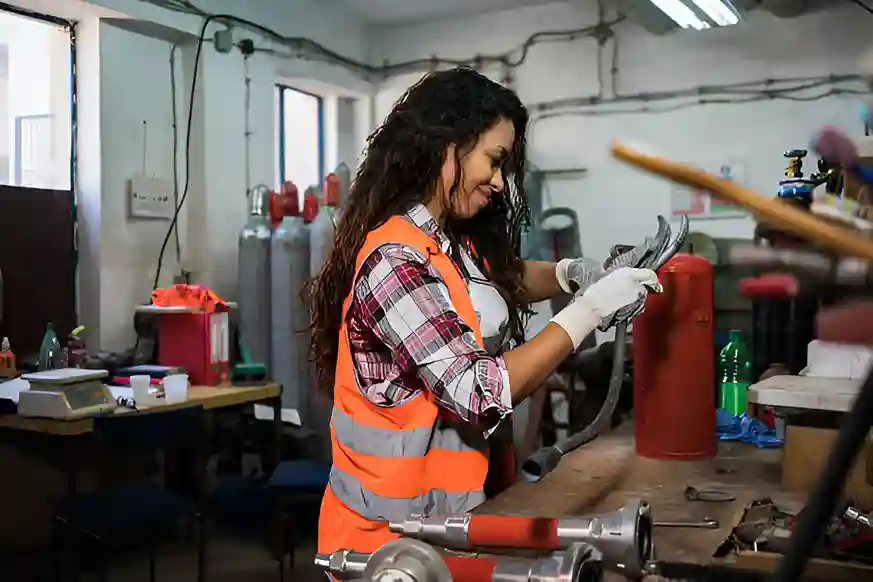
Fire Extinguisher Testing Costs: What Businesses Should Expect
Regular fire extinguisher testing is a necessary investment for businesses to guarantee safety and compliance. Understanding the associated costs can help organisations budget effectively for this essential service.
The number, type, and frequency of fire extinguishers can influence the cost.
Businesses should expect to take into account:
- Initial inspection fees: Costs for the first evaluation of existing extinguishers.
- Annual maintenance charges: Regular servicing to maintain functionality and compliance.
- Repairs and replacements: Expenses related to fixing or replacing defective units.
- Training sessions: Costs for employee training on proper use and maintenance of extinguishers.
Investing in this testing not only enhances safety but also helps avoid potential fines and liabilities associated with non-compliance.
Why Fire Extinguisher Testing Is Key to Workplace Safety
While many aspects of workplace safety are prioritised, fire extinguisher testing often emerges as a fundamental component that can considerably influence the overall safety culture. Regular testing of fire extinguishers instils confidence among employees, reinforcing the belief that their workplace is committed to their safety.
When employees know that fire extinguishers are properly maintained and functional, their readiness to respond in emergencies increases, fostering a proactive safety mindset.
Moreover, Regular fire extinguisher testing aligns with adherence to legal orders, demonstrating accountability and responsibility. This practice not only alleviates risks but also encourages open communication about safety practices, allowing for a more engaged workforce.
As employees witness their employer’s dedication to maintaining safety equipment, they are more likely to adopt safety-oriented behaviours, ultimately developing an environment where safety is a shared priority.
Frequently asked questions.
Conclusion
To sum up, regular fire extinguisher testing is significant for ensuring safety and compliance within organisations. By adhering to legal requirements and conducting thorough inspections, businesses can recognise issues, enhance employee confidence, and increase safety. The risks associated with neglecting this necessary process underscore the significance of maintaining functional and accessible fire extinguishers. Ultimately, prioritising fire extinguisher testing not only protects lives and property but also demonstrates a commitment to workplace safety.



